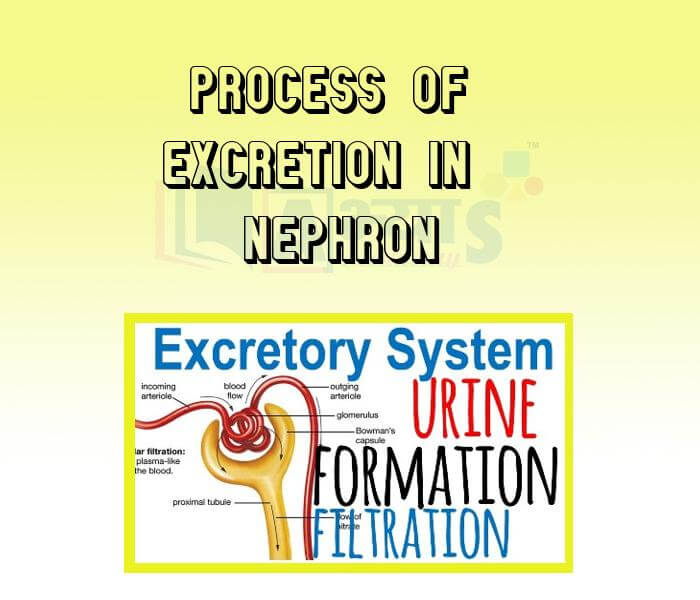Process of Excretion in Nephron


Process of Excretion in Nephron
The Process of Excretion in nephron: The process of excretion may be divided into three stages—filtration, selective reabsorption and tubular secretion.
Control of Excretion: The urine that is formed continually collects in the urinary bladder. As the bladder expands, its pressure creates an urge to pass urine through the urethra. As the bladder is muscular, the urge to urinate is under voluntary nervous control.
Some nitrogenous waste products are removed from the blood by the distal convoluted tubule, and are then added to the urine. This process is called ____________________ . | |||
| Right Option : B | |||
| View Explanation | |||
Filtration of blood occurs under high pressure in the nephrons of the _________________ . | |||
| Right Option : A | |||
| View Explanation | |||
Which of the following are correct ? (a) The filtrate contains water, glucose, salts, urea, vitamins, etc. It is called the glomerular filtrate. (b) The glomerular filtrate flows through the proximal convoluted tubule, the U-shaped Henle’s loop and the distal convoluted tubule. (c) As the bladder expands, its pressure creates an urge to pass urine through the urethra. | |||
| Right Option : D | |||
| View Explanation | |||
Students / Parents Reviews [10]
It was a good experience with Abhyas Academy. I even faced problems in starting but slowly and steadily overcomed. Especially reasoning classes helped me a lot.

Cheshta
10thMy experience was very good with Abhyas academy. I am studying here from 6th class and I am satisfied by its results in my life. I improved a lot here ahead of school syllabus.

Ayan Ghosh
8thA marvelous experience with Abhyas. I am glad to share that my ward has achieved more than enough at the Ambala ABHYAS centre. Years have passed on and more and more he has gained. May the centre flourish and develop day by day by the grace of God.

Archit Segal
7thOne of the best institutes to develope a child interest in studies.Provides SST and English knowledge also unlike other institutes. Teachers are co operative and friendly online tests andPPT develope practical knowledge also.

Aman Kumar Shrivastava
10thMy experience with Abhyas is very good. I have learnt many things here like vedic maths and reasoning also. Teachers here first take our doubts and then there are assignments to verify our weak points.

Shivam Rana
7thBeing a parent, I saw my daughter improvement in her studies by seeing a good result in all day to day compititive exam TMO, NSO, IEO etc and as well as studies. I have got a fruitful result from my daughter.

Prisha Gupta
8thAbhyas Methodology is very good. It is based on according to student and each child manages accordingly to its properly. Methodology has improved the abilities of students to shine them in future.

Manish Kumar
10thAbout Abhyas metholodology the teachers are very nice and hardworking toward students.The Centre Head Mrs Anu Sethi is also a brilliant teacher.Abhyas has taught me how to overcome problems and has always taken my doubts and suppoeted me.

Shreya Shrivastava
8thIt has a great methodology. Students here can get analysis to their test quickly.We can learn easily through PPTs and the testing methods are good. We know that where we have to practice

Barkha Arora
10thMy experience with Abhyas academy is very good. I did not think that my every subject coming here will be so strong. The main thing is that the online tests had made me learn here more things.
